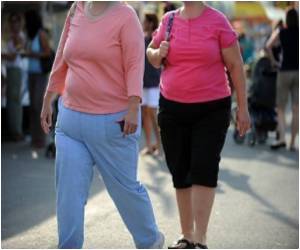
PFOA belongs to a group of environmental pollutants known as per-and polyfluorinated compounds (PFC). These compounds are used or have been used in a variety of consumer products and industrial processes such as impregnation, textiles, carpets and fire-fighting foam.
In recent decades, there has been a sharp increase in the number of overweight children and adults in both Norway and worldwide. It is suspected that diet and exercise alone cannot explain this large weight increase.
Researchers from the Norwegian Institute of Public Health suggest that the increasing levels of endocrine disrupters in the environment may be a possible contributing factor.
The study found that daughters of mothers with the highest concentrations of PFOA in the blood during pregnancy were three times as likely to be overweight at the age of about 20 years as daughters of mothers with the lowest PFOA levels.
The calculations took into account many variables, such as maternal weight and lifestyle factors.n association was also found between PFOA exposure before birth and elevated levels of insulin and leptin, two hormones that are linked to obesity.
Advertisement
The researchers maintained that it would be too early to say if this factor also impacts obesity among the sons.
Advertisement
"In the late 1980s the levels of PFOAs and other PFCs in Norway were similar to the Danish study, which makes the findings also relevant for Norway."
"It is also important to note that the levels of several of these environmental pollutants in the blood of Norwegian women have decreased significantly since about 2000. However, this does not apply to all the substances and so we should try to limit our exposure to persistent pollutants to reduce the risk of adverse health effects," said Smastuen Haug.
In 1988-1989, around 1,000 pregnant women in Aarhus, Denmark were recruited for a study where a sample of blood of women in week 30 of pregnancy was collected and frozen.
In 2008-2009, the children from these pregnancies were contacted and asked to participate in a follow-up study in which, for instance, body mass index and waist circumference were recorded.
Approximately 650 of the children agreed to participate. Employees at the Norwegian Institute of Public Health analysed the levels of a variety of PFCs in the mothers' blood.
Source-ANI














